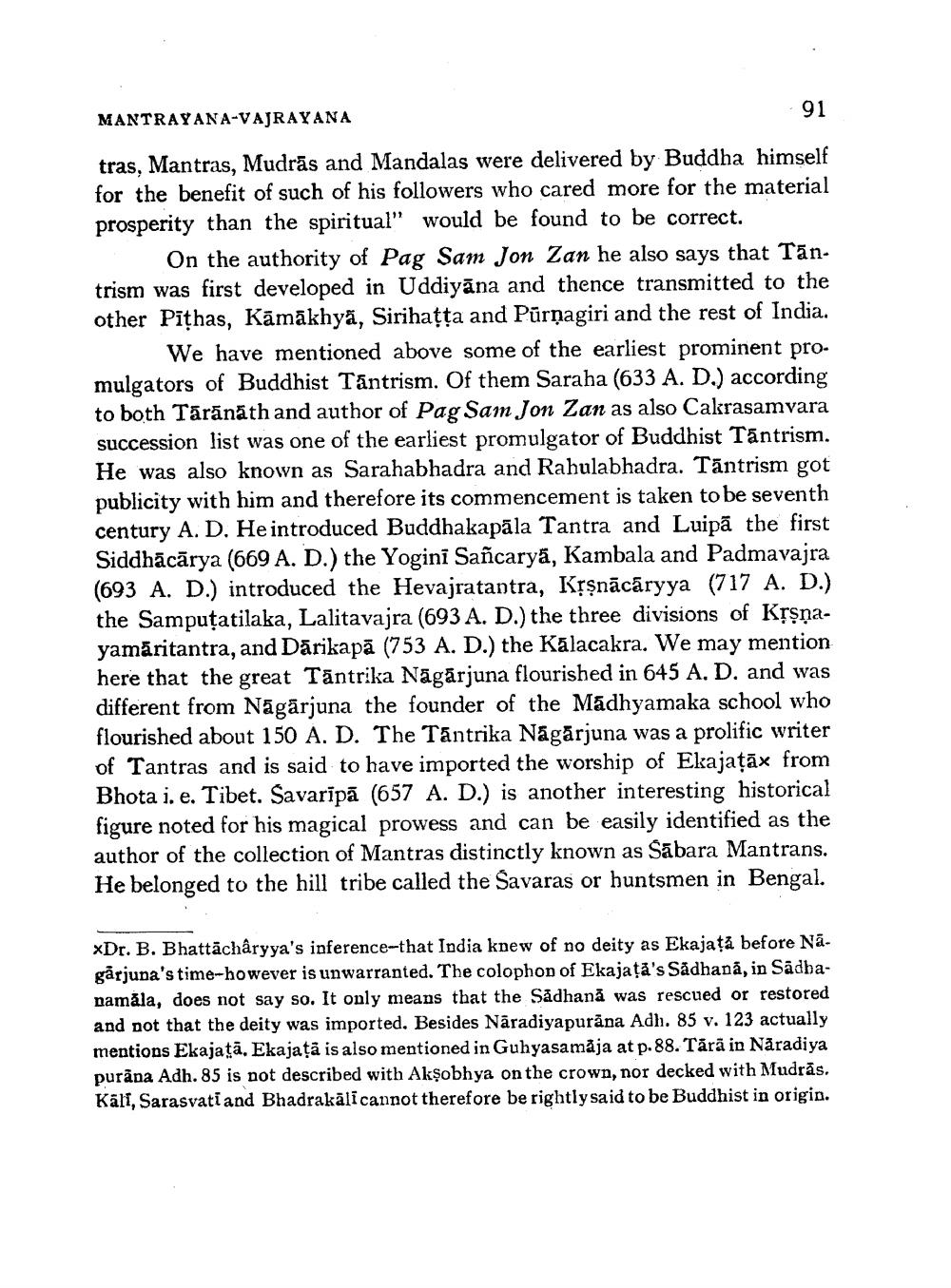________________
MANTRAYANA-VAJRAYANA
91
tras, Mantras, Mudrās and Mandalas were delivered by Buddha himself for the benefit of such of his followers who cared more for the material prosperity than the spiritual” would be found to be correct.
On the authority of Pag Sam Jon Zan he also says that Tān. trism was first developed in Uddiyāna and thence transmitted to the other Pīțhas, Kāmākhyā, Sirihațța and Pūrņagiri and the rest of India.
We have mentioned above some of the earliest prominent promulgators of Buddhist Tántrism. Of them Saraha (633 A. D.) according to both Tārānāth and author of Pag Sam Jon Zan as also Cakrasamvara succession list was one of the earliest promulgator of Buddhist Tantrism. He was also known as Sarahabhadra and Rahulabhadra. Tāntrism got publicity with him and therefore its commencement is taken to be seventh century A. D. He introduced Buddhakapāla Tantra and Luipā the first Siddhācārya (669 A. D.) the Yogini Sañcarya, Kambala and Padmavajra (693 A. D.) introduced the Hevajratantra, Krşnācāryya (717 A. D.) the Samputatilaka, Lalitavajra (693 A. D.) the three divisions of Kșşņayamaritantra, and Dārikapā (753 A. D.) the Kālacakra. We may mention here that the great Tāntrika Nāgārjuna flourished in 645 A, D, and was different from Nāgārjuna the founder of the Madhyamaka school who flourished about 150 A. D. The Tantrika Nagarjuna was a prolific writer of Tantras and is said to have imported the worship of Ekajațāx from Bhota i.e. Tibet. Savarīpā (657 A. D.) is another interesting historical figure noted for his magical prowess and can be easily identified as the author of the collection of Mantras distinctly known as Sābara Mantrans. He belonged to the hill tribe called the Savaras or huntsmen in Bengal.
xDr. B. Bhattachâryya's inference-that India knew of no deity as Ekajață before Nā. gārjuna's time-however is unwarranted. The colophon of Ekajațā's Sadhanā, in Sadbanamála, does not say so. It only means that the Sadhană was rescued or restored and not that the deity was imported. Besides Nāradiyapurāna Adh. 85 v. 123 actually mentions Ekajatā. Ekajață is also mentioned in Guhyasa māja at p. 88. Tārā in Nāradiya purana Adh.85 is not described with Akşobhya on the crown, nor decked with Mudrās. Káli, Sarasvati and Bhadrakālicannot therefore be rightly said to be Buddhist in origin.




